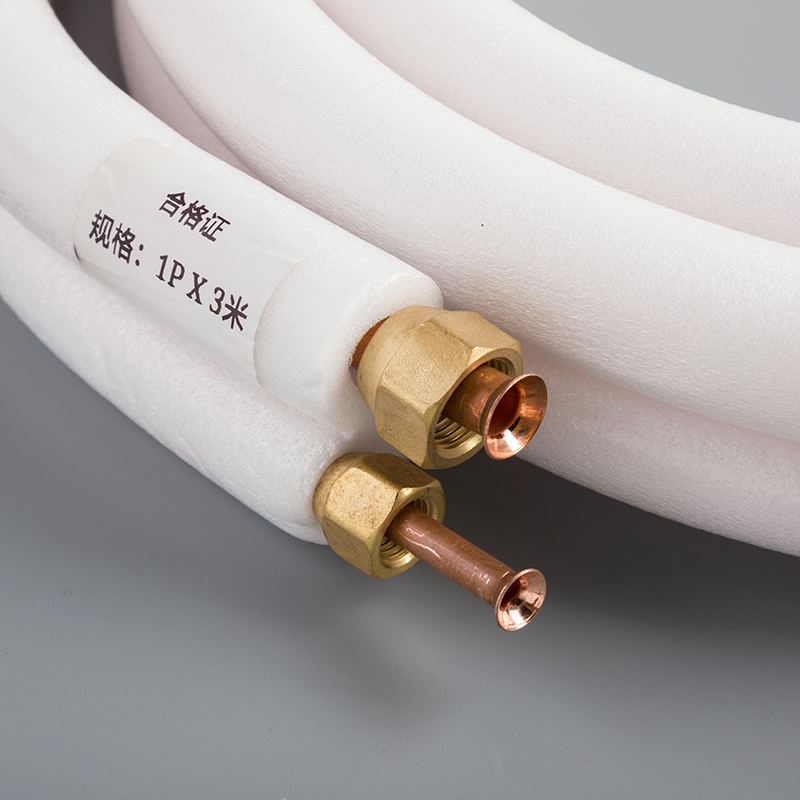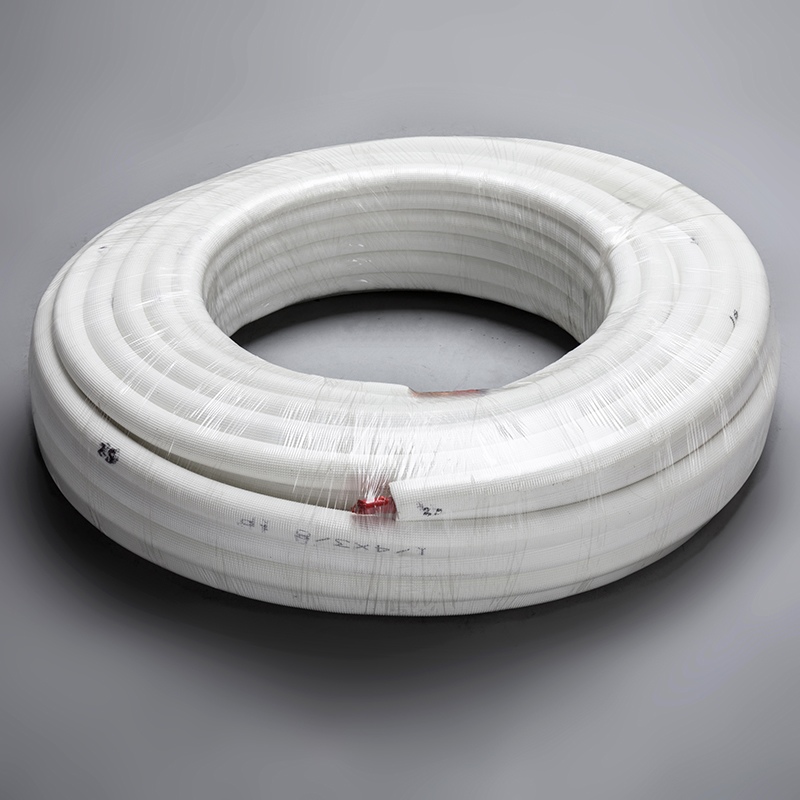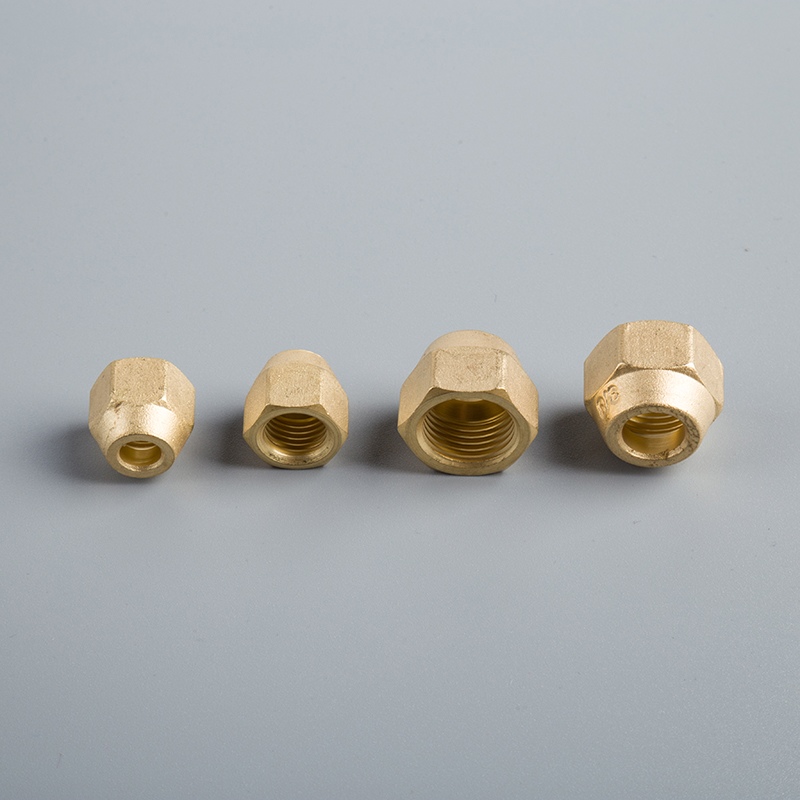Comprehensive Guide to Measuring Copper Pipe Sizes

Accurate measurement is vital in plumbing and HVAC systems, as professionals depend on precision to maintain the structural integrity and functionality of installations. Copper pipes are particularly valued for their durability and reliability. Understanding the dimensions of copper pipes is essential for making informed decisions across various applications. Precise measurements are crucial for selecting the appropriate fittings and ensuring leak-free connections. Key tools for this task include measuring tapes, pipe calipers, and depth gauge tools. Baoyuan's products are instrumental in enhancing measurement accuracy and reliability. Consistency in measurements is fundamental to quality workmanship. This guide on tools for measuring copper pipe size will offer valuable insights.
Understanding Copper Pipe Sizes
Types of Copper Pipes
Type K, L, M, and DWV
Copper pipes come in various types, each suited for specific applications. Type K copper pipes possess the thickest walls, making them ideal for underground installations. Type L pipes are slightly thinner and often used in interior plumbing. Type M pipes have the thinnest walls and are typically used in low-pressure applications. DWV (Drain, Waste, and Vent) pipes are designed for non-pressurized systems. Each type serves a unique purpose, ensuring optimal performance in different environments.
Differences in Thickness and Application
The thickness of copper pipes directly influences their application. Thicker pipes like Type K offer greater durability and are suitable for high-pressure scenarios. Thinner pipes such as Type M provide cost-effective solutions for less demanding tasks. The choice of pipe type depends on the specific requirements of the project. Accurate measurement ensures the selection of the appropriate pipe type, preventing potential issues.
Nominal vs. Actual Pipe Size
Explanation of Nominal Size
Nominal size refers to the approximate diameter of the pipe. This measurement does not reflect the actual dimensions. Manufacturers use nominal sizes as a standard reference. This simplifies the process of selecting fittings and components. Understanding nominal size is crucial for accurate planning and installation.
How It Differs from Actual Size
Actual size represents the true dimensions of the pipe. This includes both the internal and external diameters. Discrepancies between nominal and actual sizes can lead to fitting errors. Precision in measuring the actual size is essential for seamless connections. Tools like calipers and measuring tapes ensure accurate readings, enhancing the reliability of installations.
Tools for Measuring Copper Pipe Size

Measuring Tape
How to Use a Measuring Tape
A Measuring Tape offers flexibility and ease of use. To measure a copper pipe, place the tape at one end of the pipe. Extend the tape along the length or around the circumference. Ensure the tape remains straight and taut. This method provides a quick and straightforward measurement.
Tips for Accurate Measurement
Accuracy depends on technique. Keep the tape flat against the pipe surface. Avoid bending or twisting the tape. Double-check measurements by repeating the process. Consistency ensures reliability in your measurements.
Pipe Caliper
Using a Caliper for Precision
A Caliper is essential for precision. Place the caliper's jaws around the pipe. Adjust the jaws until they grip the pipe firmly. Read the measurement from the caliper's scale. This tool provides exact readings, crucial for fitting components accurately.
Advantages of Using a Caliper
The Caliper offers several benefits. It measures both internal and external diameters. Its design allows use in confined spaces. Professionals rely on calipers for their accuracy and versatility. This tool guarantees precise measurements every time.
Additional Tools
Depth Gauge Tool
A Depth Gauge Tool measures the depth of copper pipes. Insert the gauge into the pipe. Extend it until it reaches the bottom. Record the measurement displayed on the gauge. This tool is particularly useful for determining internal dimensions.
String Method for Circumference
The String Method for Measuring Circumference is a practical approach. Wrap a string around the pipe. Mark the point where the string overlaps. Measure the length of the string with a ruler. Divide this length by 3.1416 to calculate the diameter. This method provides an accurate outer diameter, essential for precise fittings.
Step-by-Step Guide to Measuring Copper Pipes

Measuring the Diameter
Internal vs. External Diameter
Copper pipes have both internal and external diameters. The internal diameter measures the space inside the pipe, which affects fluid flow. The external diameter measures the outside of the pipe, crucial for fittings. Both measurements are essential for accurate installation.
Step-by-Step Instructions
Select a Tool: Choose a digital caliper for precision. Calipers provide readings as fine as
0.01mm.Position the Caliper: Place the caliper's jaws around the pipe for external diameter. Ensure the jaws are perpendicular to the pipe.
Read the Measurement: Check the caliper's scale for the external diameter. Record the measurement.
Measure Internal Diameter: Insert the caliper's internal jaws into the pipe. Expand until the jaws touch the sides.
Record the Internal Diameter: Note the internal measurement from the caliper's scale.
Measuring the Length
Techniques for Accurate Length Measurement
Use a Measuring Tape: Extend the tape along the pipe's length. Keep the tape straight and taut.
Mark the Start and End Points: Use a marker to note the start and end of the measurement on the pipe.
Double-Check the Measurement: Re-measure to ensure accuracy. Consistency in measurements prevents errors.
Common Mistakes to Avoid
Avoid Bending the Tape: A bent tape gives inaccurate readings. Ensure the tape remains flat against the pipe.
Check for Obstructions: Remove any obstructions that might interfere with the measurement.
Repeat Measurements: Always double-check measurements to confirm accuracy.
Common Challenges and Solutions
Dealing with Irregular Shapes
How to Measure Bent or Curved Pipes
Bent or curved copper pipes present unique measurement challenges. Precision remains crucial for ensuring proper fittings. Use a flexible measuring tape to follow the pipe's contour. Start from one end and gently wrap the tape along the curve. Maintain contact with the pipe surface for accuracy. Record the measurement once the tape reaches the other end. This method captures the true length of the pipe.
Tools That Can Help
Certain tools enhance measurement accuracy for irregular shapes. A flexible measuring tape adapts to curves and bends. This tool ensures accurate readings by maintaining contact with the pipe. A digital caliper offers precision for measuring diameters at various points along the pipe. Experts highlight calipers for their role in achieving meticulous measurements. These tools provide reliable data for optimal fittings.
Measuring in Tight Spaces
Techniques for Confined Areas
Confined spaces pose difficulties for measuring copper pipes. Employ specific techniques to overcome these challenges. Use a string method to measure circumference in tight spots. Wrap a string around the pipe and mark the overlap point. Measure the string length with a ruler to determine the circumference. Divide by 3.1416 to find the diameter. This approach provides accurate measurements without needing extensive space.
Recommended Tools
Select appropriate tools for measuring in confined areas. A compact digital caliper fits into small spaces and provides precise readings. The caliper's design allows use in restricted environments. A depth gauge tool measures internal dimensions accurately. Insert the gauge into the pipe and extend it to the bottom. Record the displayed measurement for accurate data. These tools ensure reliable measurements even in challenging conditions.
Additional Resources
See Also
Links to Related Articles
Explore more about copper pipe measurements by visiting related articles. These resources provide deeper insights into the techniques and tools for precise measurement. You will find valuable information that complements the knowledge gained from this guide. Enhance your understanding of copper pipes and their applications.
Books and Guides for Further Reading
Books and guides offer comprehensive information on copper pipe measurements. These resources cover various aspects, including types of pipes, measurement techniques, and practical tips. Reading these materials will expand your expertise in handling copper pipes effectively. Look for titles that focus on plumbing and HVAC systems for the best insights.
Baoyuan Product Link
Discover Baoyuan's range of products designed to improve measurement accuracy. The link provides access to high-quality tools and equipment for measuring copper pipes. Baoyuan offers solutions that ensure precision and reliability in every project. Visit the product page to explore options that suit your needs and enhance your work efficiency.
Accurate measurement of copper pipes remains essential for achieving seamless installations. Precise measurements ensure the correct fittings and prevent leaks. Consistency in your measurement process guarantees reliable results. Practising these techniques will enhance your skills and confidence. You should explore additional resources to deepen your understanding and expertise. Baoyuan offers high-quality tools that can aid in improving measurement accuracy. Visit the provided links to discover more about these valuable resources.
See Also
Decoding Copper Pipe Sizing: An In-Depth Manual
Unravelling Copper Pipe Dimensions: A Thorough Handbook
Simple Tutorial: Mastering Copper Pipe Measurement
Simple Techniques for Accurate Copper Pipe Sizing
Simple Process: Achieving DIY Success with Copper Pipe Measurement


